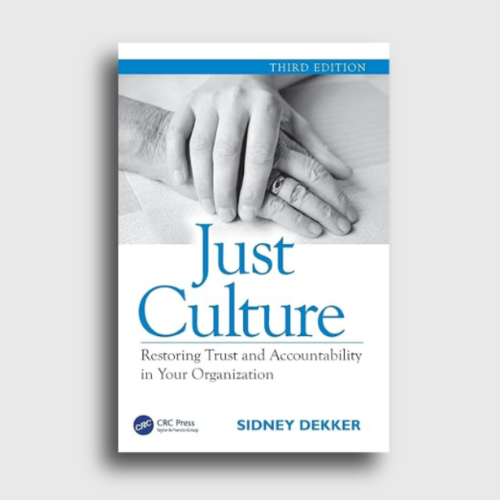What is Risk Management, and Why Does it Matter?
Why you should consider incorporating risk management practices into your work, no matter your job title

Today's professionals are navigating a complex working environment that is changing at an ever-accelerating pace. With the rapid rise of digital technology, organizations have improved operational efficiencies and collaborated globally in ways never before possible. However, to adapt to these changing conditions, employees, managers, and even stakeholders are making critical decisions at a lighting pace, increasing the likelihood for potential vulnerabilities.
What is risk management?
Whether making and following plans to meet goals or assessing processes and systems, every working professional makes daily decisions that risk unexpected outcomes and could cause instability across the organization. While risk management is traditionally associated with compliance programs, internal audits, and project management, it is also a valuable tool for any role in the professional workplace.
Contrary to common opinion, however, managing risk is not the same as fixing or mitigating problems; that is problem-solving. Unfortunately, though, in most industries, these two practices have been blended into one vague method.
So, what’s the difference between risk management and problem-solving? Timing.
“Risk management is one hundred percent proactive,” explains Chris Carter, director of the Project Management Certificate program at Georgia Tech. “Risk management happens at the beginning of a project, before any work, or problems, occur.”
Rather than waiting to handle problems once they arise, risk management requires one to consider possible risks or opportunities and create robust response plans ahead of time.
Why is risk management important?
In any project, problems and challenges are inevitable. While risk management requires more analysis and planning, it comes with benefits that far outweigh the inconveniences of a longer timeline. Any problem that would definitively prevent the success of your project would be discovered in the risk management process before you begin, allowing you to adjust your project beforehand and avoid launching an initiative that would ultimately fail.
Additionally, risk management reduces time spent on finding a solution in the middle of a project, which often dismantles the timeline.
Risk awareness requires more than just temporary and reactive behaviors. It involves creating short- and long-term strategies that will protect a business or organization's ability to maintain itself, and having a risk response plan in place ensures that when you encounter a problem you will be able to handle it.
Types of risks
Financial risk – Exposure arising from financial markets (such as credit, market, and liquidity risks) that can affect cash flow, capital structure, and valuation
Operational risk – The risk of loss from inadequate or failed processes, people, systems, or external events (e.g., supplier failures, process breakdowns, natural hazards)
Cybersecurity risk – Threats to information and technology assets that can disrupt operations and erode trust — best managed by integrating cybersecurity into enterprise risk processes
Strategic risk – Uncertainties that can undermine long-term objectives typically managed within enterprise risk frameworks (e.g., shifting customer needs or competitive moves)
Compliance risk – Potential for legal or regulatory breaches leading to fines, restrictions, or remediation costs
Reputational risk – The potential damage from negative stakeholder perceptions that decreases trust, demand, and partner willingness to engage — even when no law is broken
Benefits of risk management
What is a risk-aware culture?
While traditional risk management approaches tended to be siloed, many public- and private-sector organizations have struggled to mitigate the scale and scope of disruptions exacerbated by workplace transformations. As a result, there has been a global shift to extend the role of "risk manager" to every employee within the workplace.
From educating all employees about potential risks to leveraging technology and increasing leadership buy-in, making risk identification and prevention part of company culture is a significant competitive advantage for any organization.
"A company that prioritizes effective risk management embodies a culture that promotes transparency, knowledge sharing, continuous improvement, and a strong commitment to ethical behavior," says Byron Fitch, senior consultant for Georgia Tech Strategic Consulting. "When these values and behaviors are ingrained in an organization's culture, employees are more likely to collectively and actively think through unexpected challenges."
The future of risk management
The landscape of risk management is changing quickly. From regulatory changes to automation and digital safety, businesses continue to face massive disruptions across all sectors of the economy. To survive in this new era, businesses will need a risk management program that blends strategy, communication, and agility.
"Vulnerabilities and threats will always exist and continue to grow, especially in the digital age," notes Phu Le, instructor for the Risk Management Framework course. "A risk management plan goes a long way in helping organizations prepare for malicious activities while equipping employees to make better decisions should a weakness be exploited."
Additionally, to help ensure business continuity and growth, it will be key to seek out the appropriate level of training needed to meet the demands of uncertainty. Organizations such as an insurance company, financial institution, or even investment firms recognize the importance of risk management because credit risk, market risk, financial risk, and reputational risk all directly affect their resilience.
Every professional can benefit from adopting risk management practices into their work," emphasizes Carter. "Whether educating your team on the fundamentals of risk or seeking industry-based training for a career in risk management, professional education is crucial for developing the mindsets, skills, and frameworks that build organizational resilience and sustain relevance over the next decade."

